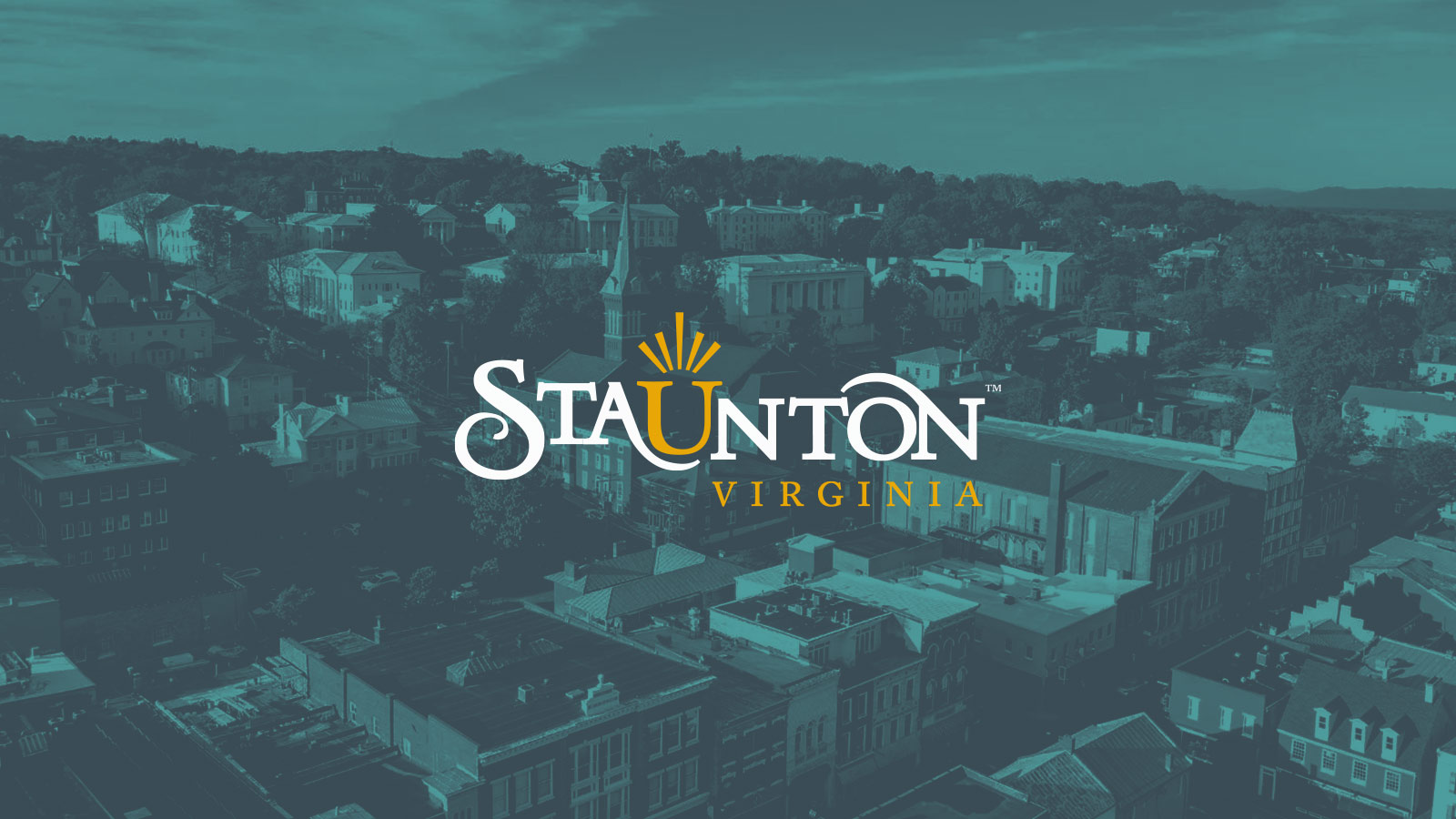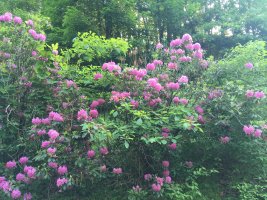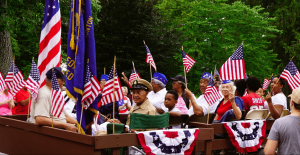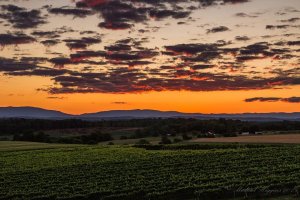
African American History in Staunton, VA
The African American experience is essential to Staunton and the surrounding areas. Read on to learn about Staunton’s notable Black citizens and discover resources for gaining a broader understanding of our city’s African-American history, culture, and contributions.
History
Before the Civil War, many farms throughout the Shenandoah Valley relied upon the labor of enslaved African Americans. In 1830, only about one-sixth of Staunton’s African American population was free. Those people worked as blacksmiths, shoemakers, laborers, domestics, and barbers. After the Emancipation Proclamation, business opportunities grew and by the end of the century, Staunton had 26 black-owned businesses. These included grocery and variety stores, a cabinet-making shop, three cobblers, a restaurant, a boarding house, barbershops, and several laundries. Ten years later, there were at least 46 black-owned businesses in Staunton. These included a newspaper, hotel, restaurants, a meat market, an insurance company, a jewelry store, and professionals such as doctors and a lawyer.
Festivals, Research, and Museums
African American Heritage Festival
Covid canceled Staunton’s 2020 African American Heritage Festival, but it will hopefully return for its 32nd year in 2021. This free, annual two-day festival in September is the largest and oldest in the Shenandoah Valley. Visitors can expect historians, art by regional artists, vendors, entertainment, and community outreach. Area churches gather for an “under the tent” worship service on Sunday morning, and everyone can enjoy an afternoon of gospel music. The event is open to the public. “If that’s not your heritage, it’s an easy bridge-building activity that allows you to experience our food and culture.”
Staunton/Augusta County African American Research Society
Staunton/Augusta County African American Research Society’s mission “is to research, develop and maintain an ongoing written, pictorial and multimedia archive of the African American experience in Staunton and Augusta County from its early settlement in 1738 to the present by focusing on education, business, politics, religion, military service and cultural experience.” The society’s website is a good source of information for general and family history of Black people in this area.
Laten Ervin Bechtel’s In Their Words: Growing Up In Segregated Staunton and Augusta County, Virginia
In this 300-page oral history, Bechtel, a local author and historian interviews 30 African Americans who grew up in segregated times. Bechtel’s interviews record an important side of local history and show racial discrimination through the eyes of those who lived it. Available in the Staunton Public Library.
Frontier Culture Museum’s West African Farm Exhibit
The Frontier Culture Museum’s living history farms educate visitors from the present by recreating the past. The West African Farm exhibit “explores the cultural contributions of African captives who were brought to Virginia in the 1700s.” Captives from many ethnic groups came from all over Africa, but many were Igbo from the West African Coast. The West African Farm demonstrates how free Igbo people lived in Africa in the 1700s. As they tour the exhibit, visitors can learn about history, architecture, farming, cooking, folklore, pottery, weaving, and more.
Woodrow Wilson Presidential Library & Museum
Woodrow Wilson has been criticized for his attitudes on race and his birthplace has a history of slavery. The Woodrow Wilson Presidential Library & Museum seeks to educate with its exhibits Wilson and Civil Rights and Enslaved Laborers in the Manse. Curator Andrew Phillips developed the live virtual programs that explore Wilson’s impact on American civil rights and the “experiences of the enslaved people who lived and labored in the Presbyterian Manse.” Sign up to reserve your spot in the programs.
Notable Staunton Addresses
Montgomery Hall Park
Before the 1940s, Staunton’s Black community had no recreational facilities and was given just one day a year to visit Gypsy Hill Park. When Black leaders asked to use the park more, Staunton bought the 150-acre Montgomery Hall mansion property, to build a separate park. In 1946, Montgomery Hall Park became one of only two Virginia parks dedicated to African American use, and people traveled many miles to visit. The park remained segregated until 1969. Irene Givens led the park committee and its programs for 25 years and today the administration building bears her name. In recent years Montgomery Hall Park has hosted an annual Juneteenth celebration as a way to celebrate the end of slavery. The celebration has included food, live entertainment, children’s activities, information booths, voter registration, healthy screenings, and more.
A good way to learn about the park’s history is to watch the Woodrow Wilson Birthplace and Presidential Library’s 2008 Montgomery Hall Park Project.
Booker T. Washington Museum and Library
The Booker T. Washington Museum and Library is housed in the Booker T. Washington Community Center. This brick building built in the Art Deco style is Staunton’s former segregated high school, which operated for 30 years before Staunton’s schools were finally integrated in 1966. Not only did the school serve as an educational space, but it also was a public meeting place for the African American community. It hosted social events, voter registration, and adult night classes. The museum contains photographs, articles, books, yearbooks, and memorabilia like sports trophies and letterman jackets. The building has been listed on the National Register of Historic Places since 2014.
Allen Chapel A.M.E
Allen Chapel A.M.E (African Methodist Episcopal), organized in 1865 was the first Black church west of the Blue Ridge. The congregation worshipped in various places before the original church was built at 921 West Beverley Street in 1924. This is also the sight of the city’s first Black choir and first Black school for adults. Faced with parking limitations, the congregation moved in 1997 to its current location on Sudbury Street.
Fairview Cemetery
Six-acre Fairview Cemetery located in northern Staunton is a predominantly African American cemetery. Mount Zion Baptist and Augusta Street United Methodist Churches founded in 1869. The Lambert Street location was outside city limits at the time and part of a Black community called Sandy Hollow. Early graves are unmarked, but a section developed 30 years later looks like a typical “park cemetery.”
East Beverley Street
The Cabell House (654 E. Beverley Street) is the last exposed-log structure in Staunton. A fire damaged it in 1920, but the original part remains. It is typical of 19th century African American architecture. It was built in 1869 by Edmund Cabell, a “free man of color,” and owned by three generations of his family. Nearby, the building at East Beverley and Market Streets was originally built as a masonic lodge and is still used for that purpose. Incorporated in 1882, Staunton’s “Colored Masonic Mount Zion Lodge, no. 18” is one of the oldest African-American masonic lodges in the U.S.
Notable Black Stauntonians
Robert Campbell
Robert Campbell was born free in 1794. Before the Civil War, only one-sixth of the African-American population was free. After serving in the War of 1812, Campbell moved to Staunton and opened a barbershop on Beverley Street. His successful business allowed him to buy five downtown buildings and he was considered wealthy by the standards of the times. By 1891, Staunton had 26 black-owned businesses that included barbershops, grocery stores, cobble shops, a restaurant, and a boarding house. This number increased to 46 by 1904 and the businesses included a hotel, a newspaper, an insurance company, a jewelry store, doctors, and lawyers.
Willis McGlascoe Carter
Willis McGlascoe Carter was an NAACP leader who was born into slavery in 1852. Self-educated in his youth, he became an educator and principal in Augusta County’s segregated public schools. He led the Augusta County Teachers’ Association and helped educate teachers. Carter was editor of the Southern Tribune, an African-American newspaper in Staunton. He also wrote a detailed history of his family and education. Carter helped create the Negro Industrial and Educational Association of Virginia. He lies buried in Fairview Cemetery.
Charles J. Waller
Born in 1898, Dr. Charles J. Waller served as regional vice-president of the national Medical Association. He practiced medicine in Staunton for many years without hospital privileges. Later, he became a member of the King’s Daughters’ staff and was elected president in 1968. He was also the first African-American to run for Staunton’s city council.
Captain William Green Jr.
Captain William Green Jr. was born in 1920 and graduated from Booker T. Washington High School in 1939. He joined the U.S. Army Air Corps and became one of the famed Tuskegee Airmen, one of our country’s first Black aviators. He flew 123 wartime missions in Europe and earned a Distinguished Flying Cross, an Air Medal with six oak leaf clusters, E.T.O. ribbons with three battle stars, and the Purple Heart.
Rita Wilson
Born in 1940, Rita Wilson was Staunton’s first African American councilwoman. She served 16 years as a member and vice mayor of city council. She also served on the school board and the board of the Frontier Culture Museum.
For more information, take a look at the Staunton African American Heritage Brochure.
Newsletter Sign-up
Stay up to date on the latest and greatest happening in Staunton.


